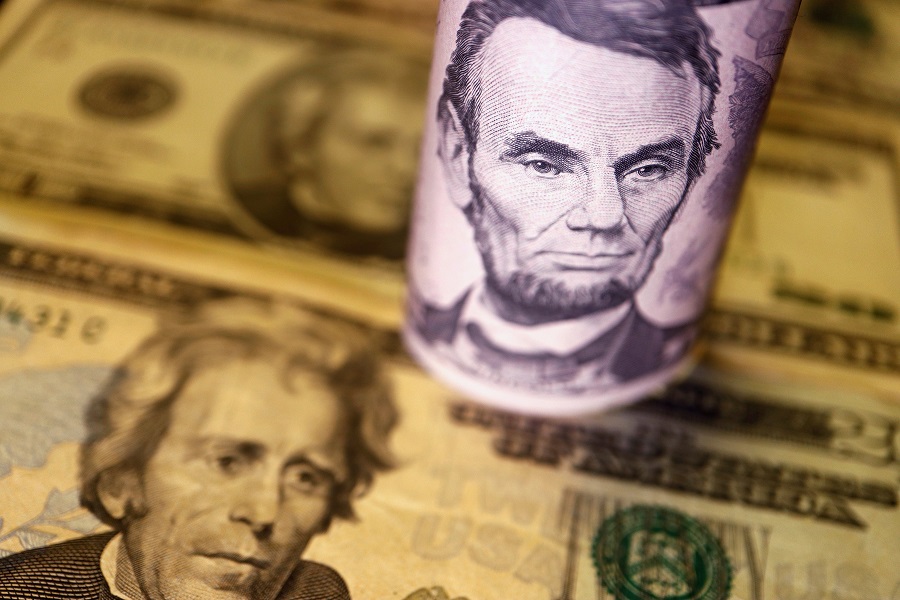
Asia-Pacific equity markets were mixed on Thursday as investors weighed the implications of a Donald Trump presidency, while also eyeing monetary policy decisions from the U.S. Federal Reserve and other major central banks later in the day.
Though potential for a Republican sweep quickly ushering in big fiscal spending sent all three major U.S. share indexes surging to record peaks, strong gains were not seen in Asia.
U.S. Treasury yields soared on the risk of higher deficits, helping lift the dollar to its biggest one-day gain in more than two years versus major peers on Wednesday.
The euro was under additional pressure after German Chancellor Olaf Scholz sacked his Finance Minister Christian Lindner, causing the ruling three-party coalition to collapse.
The mixed reaction for Asian stocks was underscored in Japan as the tech-heavy Nikkei 225 reversed initial gains to be down 0.44% at 39,308.55 as of 0217 GMT, while the broader Topix remained up 0.88%.
Elevated bond yields – with the 10-year U.S. Treasury yield at 4.4236%, hovering close to Wednesday's four-month peak of 4.4790%, and equivalent-maturity Japanese government bond yields rising to 1% for the first time in three months – buoyed shares of Japanese banks and insurers, but weighed on tech names and other growth stocks.
"In this highly volatile period, you have to be very selective in Japan," said Frank Benzimra, head of Asia equity strategy at Societe Generale, adding that the Nikkei looks overextended.
"When we have the Nikkei at this level, I feel very uncomfortable."
Elsewhere, South Korea's Kospi edged down 0.14%, while Australia's equity benchmark slipped 0.24%, hurt by weakness in gold stocks after bullion slumped against a strengthening dollar.
Chinese markets, which lost ground on Wednesday due to the likelihood of higher tariffs under another Trump presidency, rebounded in the latest session. Hong Kong's Hang Seng rose 0.49% and mainland blue chips added 0.14%.
China's week-long National People's Congress Standing Committee meeting concludes on Friday, and market participants are keen for any fresh details on stimulus measures.
Chinese trade data released Thursday showed outbound shipments grew at the fastest pace in over two years in October as manufacturers rushed inventory to major export markets in anticipation of further tariffs from the U.S. and the European Union.
Weakness in some equity markets, including China and Europe, may be a product of investors flocking into U.S. assets, said Chris Weston, head of research at Pepperstone.
U.S. stock futures were overall flat to slightly higher on Thursday.
Pan-European STOXX 50 futures edged down 0.04%, although German DAX futures added 0.1%, following a 1.1% slide on Wednesday.
German Chancellor Scholz is seeking support from the opposition conservatives in passing the budget and boosting military spending, after the falling out with the Free Democrats party. The leader of the Conservatives, which are far ahead in opinion polls, is due to respond in a news conference later in the day.
The euro was little changed at $1.0733 following its worst one-day slump since March 2020 on Wednesday, when it dived 1.82%.
The dollar index, which measures the currency against the euro and five other major peers, was steady at 105.04, after jumping 1.53% in the previous session, the most since September 2022.
The greenback slipped 0.16% to 154.36 yen, following a 2% rally overnight.
While markets were still confident the Fed would cut interest rates by 25 basis points at the close of its two-day meeting on Thursday, they slightly reduced bets on further easing in December.
Trump's proposed tariffs and immigration policies risk stoking inflation, which would slow the path of Fed policy easing.
"The big challenge for markets is that if you do see tariffs come through you need to balance the short-term nature of inflation risks with the medium-term aspect of lower growth," said Justin Onuekwusi, chief investment officer at investment firm St. James's Place.
"The market appears to be thinking about inflation right now."
The Bank of England is likely to cut interest rates by a quarter point on Thursday for only the second time since 2020 but the big question for investors is whether the BoE sends a signal about its subsequent moves after the government's inflation-raising budget.
Sterling rose 0.28% to $1.2915, following a 1.24% slide on Wednesday.
Sweden's Riksbank is also expected to cut rates on Thursday, with most economists predicting a half-point reduction. Norway's central bank is expected to keep policy steady.
Bitcoin caught its breath on Thursday, easing 1% to $75,200, following its vault to a record high $76,499.99 overnight. Trump is seen as actively supportive of cryptocurrencies.
Gold remained weak following Wednesday's more than 3% tumble, edging down to $2,657.58. However, that was still not far from its recent record peak of $2,790.15.
Crude also succumbed to dollar strength on Wednesday, but clawed back some losses on Thursday, supported by risks to oil supply from a Trump presidency and a hurricane building in the Gulf Coast. [O/R]
Brent crude oil futures rose 0.35% to $75.18 per barrel. U.S. West Texas Intermediate (WTI) crude gained 0.22% to $71.85.
